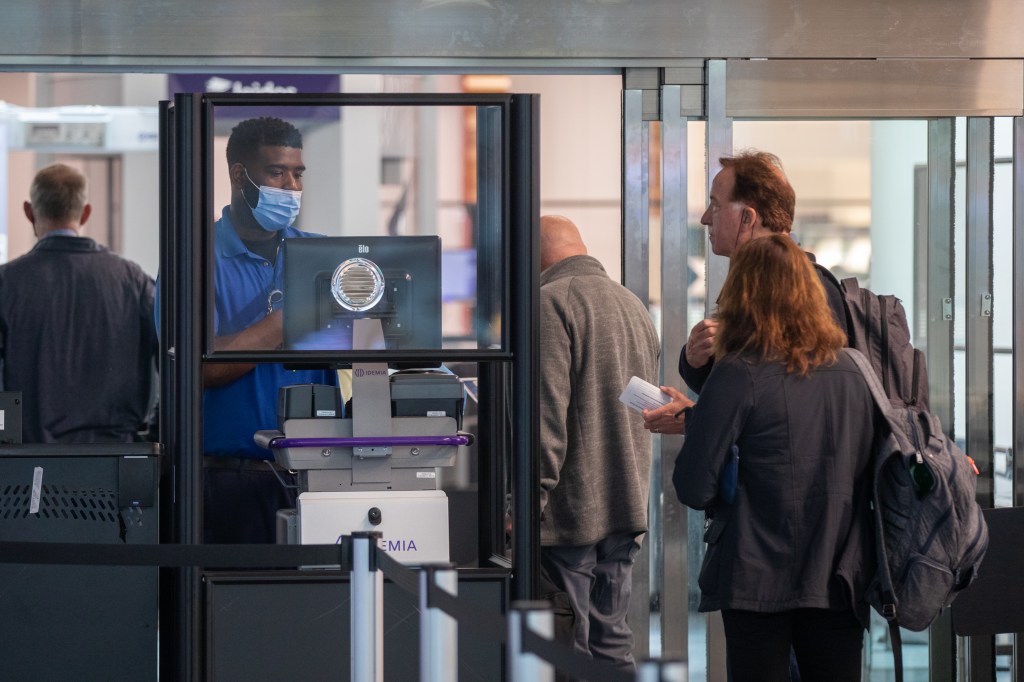Transportation Security Administration officers at Tampa International Airport (TPA) found out firsthand how well facial recognition works.
When a person attempted to pass through the TPA security checkpoint using a driver’s license of another person, the facial recognition technology used by the TSA stopped them in their tracks.
Actually, the Credential Authentication Technology with Facial Recognition, known as CAT-2, did what it was intended to do. Namely, it checked to see if the person was scheduled to fly that day out of the airport and whether they were indeed that person. In this case, the facial recognition software did its job and identified the mismatch.
The TSA officer acted appropriately, following due diligence by examining the person’s driver’s license manually, which ultimately led to more questions and the arrest of the person, who had a warrant out for her arrest in Pennsylvania as determined from the National Crime Information Center database.
The TSA is going full board with facial recognition, despite criticisms of data misuse, racial bias and other errors that are made by the software. However, as the recent incident at the Tampa airport demonstrated, if the CAT-2 system cannot confirm a match, a manual examination of the identification can be used to confirm the person’s identity and their eligibility to travel.
Baseless criticisms
The TPA incident demonstrates several benefits of CAT-2 using facial recognition. It also illustrates that many of the criticisms are baseless.
First, the person who presented themselves to the security checkpoint offered a form of identification with a picture that was not their own. What the facial recognition software did is compare the photo on their ID with the person’s face. When there was a mismatch, flags were raised that prompted further investigation, namely a manual check of the person’s identity.
There was no data saved during the incident. The TSA does not keep such records, since once a passenger lands at their final destination, any security risk that they pose to the air system effectively evaporates.
Second, if the facial recognition flag had been incorrect, and the person was indeed who they claimed to be and were eligible to fly out of TPA that day, then a manual check of their ID would have quickly resolved the situation.
Third, if facial recognition is accurate 99% of the time, as some research says, the time savings for those who pass the software test is significant, while the delay experienced with those who require manual ID authentication would be minimal. Most importantly, with so many people quickly passing through the ID verification process with CAT-2, every person benefits from higher throughput rates.
Looking to the future
The biggest argument against facial recognition at airport security checkpoints is not what the technology is doing today, but what it may do in the future. This embodies intrusion of our personal privacy and compromising our civil liberties. Such anticipated applications and fears miss future directions for airport security.
For airport security to remain one step ahead of bad actors, it must continue to evolve. This means exploring new layers of security screening that will keep the air system secure no matter what bad actors plan to do and throw at it. Keeping threat items off airplanes has been the strategy used to meet this goal. What facial recognition does is both deter bad actors from trying to enter the air system and, if they decide to enter, forces them to expose their identity to the TSA.
Bad actors are a nebulous concept within aviation. Every person has a risk profile that is difficult to assess with accuracy. What is easier to assess is the relative risk of passengers, with bad actors on the high end of this risk spectrum.
When a person presents themselves at an airport security checkpoint, the risk is added to the air system. Bad actors stand out among all travelers, since nearly all passengers pose no risk to the air system. To them, facial recognition should be a welcome opportunity to demonstrate how little risk they pose to the air system.
Those who oppose facial recognition at airport security checkpoints may provide loud voices of opposition, but they are not the best informed. If the TSA is to remake airport security over the next decade, facial recognition must be a critical component of this makeover. What occurred at TPA is just the first of many pending demonstrations that the technology works, and that the future is closer than many realize.
Sheldon H. Jacobson is a professor of computer science at the University of Illinois Urbana-Champaign. ©2024 Chicago Tribune. Distributed by Tribune Content Agency.
